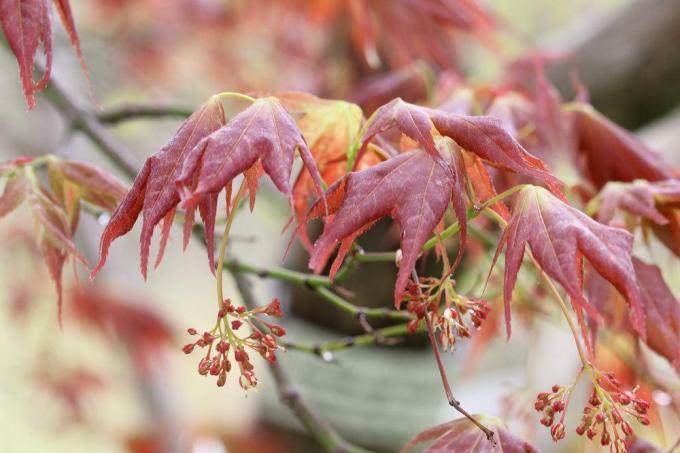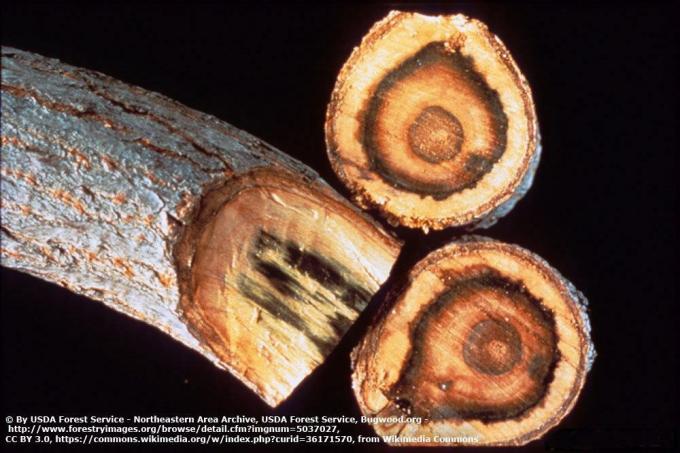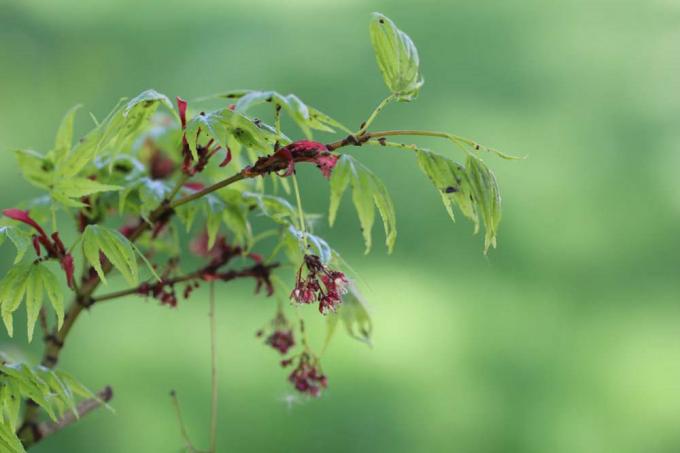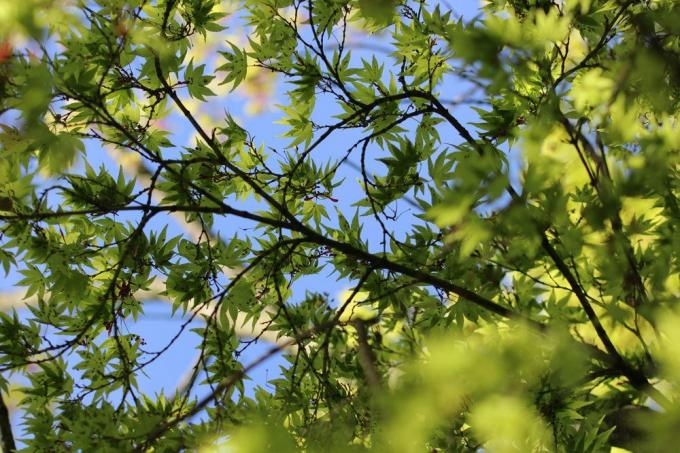
table of contents
- root cause
- Wilted sickness
- Recognize infestation
- Combat
- prevention
- Other causes
The Japanese maple Acer palmatum, also known as the Japanese Japanese maple, is native to Asia Thanks to its filigree and intensely colored foliage, it is not only popular in Japanese gardens Ornamental wood. It can be cultivated both in the bed and in the tub and is becoming more and more splendid from year to year. However, this exotic wood is quite demanding and, under unfavorable conditions, can be attacked by diseases that manifest themselves in leaf damage, among other things.
root cause
When leaves curl, curl, or turn brown
Leaves that turn brown, curl up or curl, as well as leaf fall in summer and entire dry shoots or branches, mostly on the Wilted sickness there. Even if the Japanese maple Acer palmatum is generally robust and relatively easy to care for, it is still demanding in terms of site conditions. If they are not optimal, it can favor a fungal attack. This fungal disease in particular can be fatal for the magnificent Japanese maple. It is all the more important to observe the requirements of this ornamental wood and to implement them as best as possible.
Wilted sickness
What is the wilt disease?
- Verticillium wilt mainly affects maples
- Is transmitted by Verticillium alboatrum and Verticillium dahliae
- Soil-borne mushrooms that can survive in the soil for up to 15 years
- Wilt disease is dangerous and highly contagious
- Advanced infestation usually fatal for the plant in question
- Plants with already weakened roots are particularly susceptible
- Fungus invades through injuries to the bark or roots
- Enters the pathways of individual branches or shoots and grows
- Is distributed throughout the plant by the water flow
The Japanese maple tries to fight off this fungus by so-called Thyllen (Filling cells, protuberances). As a result, the ducts clog, the water supply to individual branches comes to a standstill, they become dry and die.
Favoring factors
The wilt disease is favored by unfavorable site conditions, soil compaction and impairments in the water supply. If the location is rather unfavorable or if the care does not meet the natural needs of these plants, this makes them much more susceptible to this fungus. Years of intense heat and drought, as well as a location in direct sun, can give rise to this fungus.
In addition to dryness, too much moisture can also promote infestation. The Japanese maple Acer palmatum needs evenly moist soil, but is very sensitive to stagnant moisture. Ideally, the top soil layer should be allowed to dry off before each watering.
tip: With potted plants, water should never be left in saucers or planters.
Recognize infestation
- Initially, the bark of infected shoots is slightly wrinkled and dries up
- Leaves on these shoots turn brown, dry up, droop limply
- Damage is often mistaken for sunburn
- Shoot buds also brown
- Later the entire shoot dies
- Cross-section of a dead branch can clearly identify or rule out infestation
- Affected branch shows brownish-black, often ring-shaped discoloration in the ducts
- With advanced infestation, more and more shoots and branches are dry
- Plants, especially younger ones, die
- Combat only possible to a limited extent

Combat
A direct control of the Verticillium wilt with means of spraying or watering is not possible. There is currently no fungicide on the market that can effectively combat this fungal disease.
If the infestation has not yet progressed, you can try to save the plant by cutting out infected parts of the plant.
It is important here to cut into healthy wood and not to dispose of the cuttings on the compost, but only in the household waste. Even fallen leaves must be completely removed from the ground. Cut wounds are then best closed with a fungicidal tree wax. As long as the plant has not yet completely died, you can fertilize it with a shrub or hedge fertilizer after cutting and stimulate it to sprout again.
tip: Cutting tools should be sharp to avoid crushing shoots and branches and must be disinfected after the cut. This should prevent the fungus from being transmitted to other plants.
prevention
- Prevent wilt disease with the right planting
- Do not injure roots when planting
- Dig the planting pit deep enough and fill it with loose substrate
- Loose soil should prevent waterlogging
- Introducing an approx. A five centimeter high drainage layer is recommended
- If possible, plant the maple slightly higher so that excess water can run off
- In the event of repeated infestation, remove the plant completely
- Do not plant a maple in the same place again
- Pay attention to an optimal supply of water and nutrients
- Avoid one-sided fertilization, especially one that is too nitrogenous
Maples should never be planted in a location where this wilt disease has already occurred. Not even if the floor was generously replaced afterwards. The best thing to do is to plant only trees that are as resistant as possible in this place.

tip: Depending on the nature of the soil, lowering the pH value can also minimize the risk of infection.
Other causes
Leaf tip and leaf margin drought
If the leaves turn brown and dry up, this can also be an indication of Leaf tip drought be. This occurs especially when the Japanese maple Acer palmatum is on a draughty resp. too windy location. On the other hand, brown spots on the leaves, especially in sunny locations, indicate burns. Therefore, when choosing the location, you should pay attention to a partially shaded and sheltered place.
If the leaves curl up or curl up, this can be due to the so-called Leaf margin drought indicate. Because, in contrast to wilt disease, with a leaf margin drought no complete sections of branches die off and the plants sprout normally again in the next year. This problem also occurs in sunny, unprotected locations in connection with poor soil conditions

